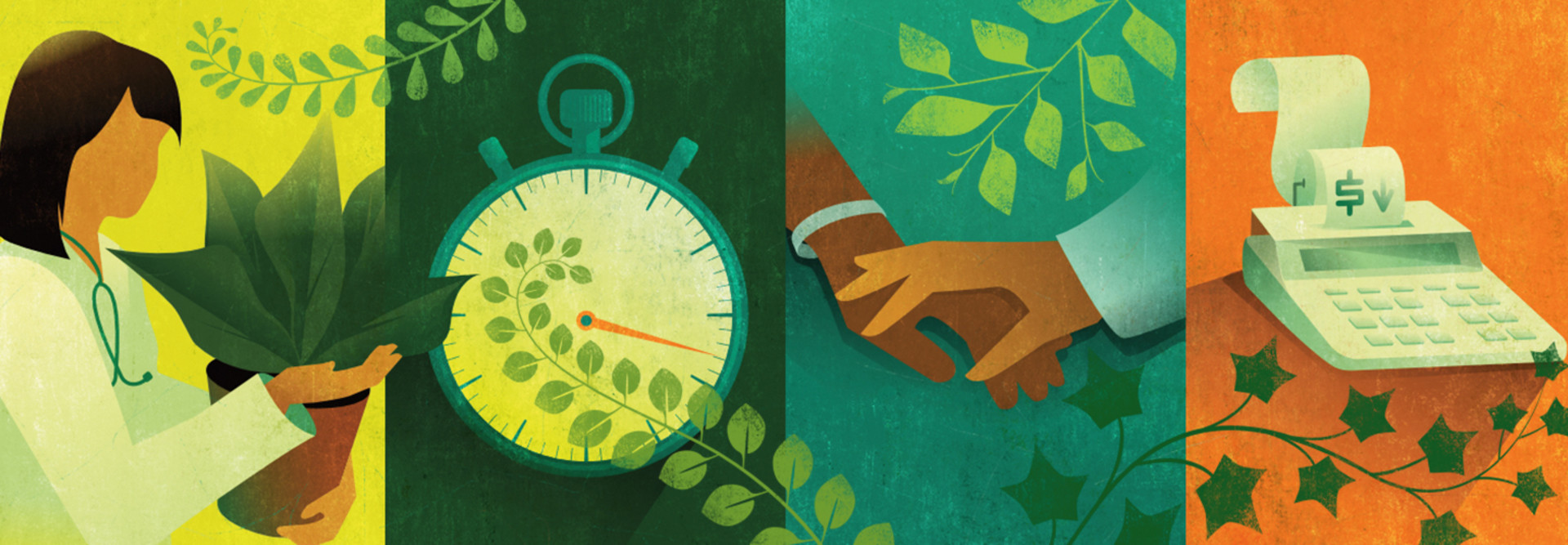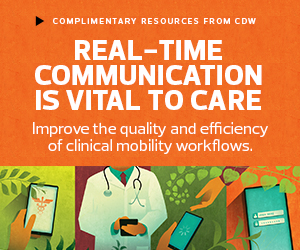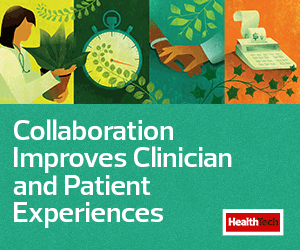Clinical Collaboration Boosts the Patient Experience
CC&C tools must fill communication gaps with patients to be legitimate, according to Shah. To improve patient outcomes using CC&C tools, health systems should focus on specific patient populations with specific conditions, he says.
“We intuitively know that different diseases require different treatments, but we forget that applies equally to patient collaboration tools,” Shah says. “If you want to measurably impact patient outcomes, give them personalized communication across multiple modalities such as text messaging, chat, mobile, phone, video and desktop. Each patient is different and will require individualized collaboration experiences.”
Jennings describes a scenario in which CC&C tools can boost the patient experience and lower their costs by connecting caregivers and enabling more seamless throughput. A nurse can send a message to the ordering provider through mobile messaging to request clarity on an order or updates regarding patient status and receive an instant response while next to the patient. Without CC&C, a clinician would have to leave the patient’s side and return to the nursing station to find out the name of the ordering provider and contact the physician — either through a page or inbox notification through an EHR — and wait for a response.
DOWNLOAD THE WHITE PAPER: Improve health outcomes with clinical communication.
Reducing overhead alerts and pages over the intercom can also improve the patient experience. Many healthcare organizations eliminate overhead alerts for contacting on-call physicians but still use them for fires and other emergencies. Tools like Zebra’s Workforce Connect push-to-talk solution provide these messaging capabilities, according to Jennings. A message may say “Code Blue” for a life-threatening situation, and such messages can disrupt patients’ sleep.
Tracking messages digitally rather than using overhead messages also provides the health system with data on who was notified at what time and how long it took to arrive at the patient’s bedside, Jennings adds.
Clinical Collaboration Improves Employee Engagement
Dr. Louis Jeansonne, chief medical information officer at Ochsner Health, explains that the Triple Aim is focused on patient experience while the Quadruple Aim adds emphasis on clinician experience and employee engagement. That includes using CC&C tools to help physicians avoid burnout.
Physicians at Ochsner use Epic’s mobile messaging app HAIKU, and clinicians use Epic Rover to see schedules, X-rays and radiology images without going to a computer. The health system also uses the scheduling app Lightning Bolt to keep track of who is on call. “That feeds into Epic, our EMR, so that nurses can go in the system,” Jeansonne says. “They can see who’s on call, and they can send them a message. We don’t have to know everyone’s number.”
With physicians spread across the Ochsner system’s locations in Louisiana, Mississippi and Alabama, the ability to get ahold of one of 3,000 physicians makes the CC&C app a “really powerful tool,” Jeansonne says.
Click the banner below to learn how a clinical mobility workshop can improve care.













